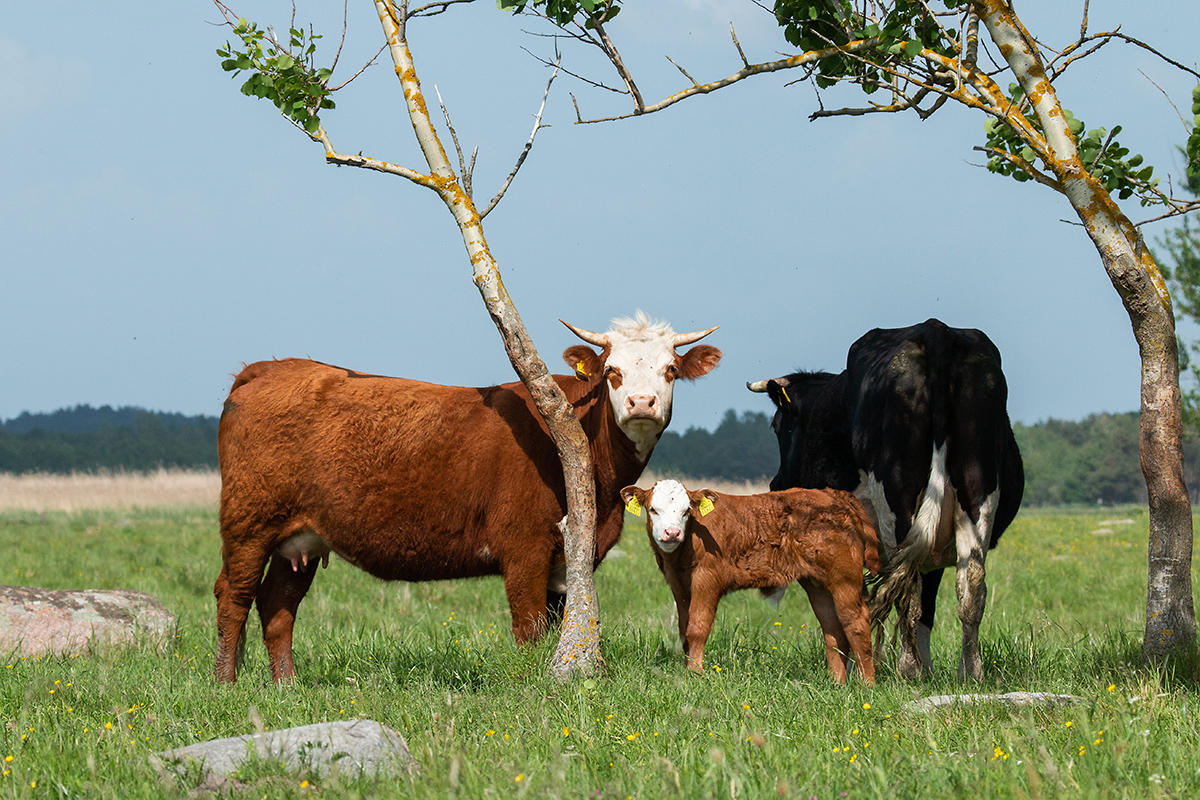European agricultural measures must be consistent with environmental and climate policies

Agricultural grants are paid under the European Union’s (EU) Common Agricultural Policy (CAP). The CAP has two so-called pillars: direct payments and market organisation measures, and the rural development policy. While direct payments come from the EU, in 2022 the rural development support is paid on the basis of the Rural Development Plan (RDP) from both the state budget and EU funds. In 2023 a new period of agricultural grants begins, based on the EU's Common Agricultural Policy Strategic Plan 2023-2027. The general objective of the grants is to support both farmers and the protection of biodiversity [1].
About a third of direct payments are granted for environmentally friendly agricultural practices (e.g. grassland conservation, crop diversification). The amount of the grant depends on the size of the area covered by environmentally friendly farming practices, and it is important that the methods used maintain biodiversity and soil and water quality, and produce low emissions [2].
Despite the fact that the objectives of EU direct payments include the conservation of biodiversity, the impact of some direct payments on biodiversity is rather negative. There is evidence that the higher the Member States’ grants, the higher the nitrogen emissions, the greenhouse gas emissions from agricultural land, and the use of pesticides. Estonian grants are one of the lowest and the environmental indicators of our agriculture are not as bad as those of Member States with large grants, but our trend is turning downwards [3]. The European Commission has therefore decided that agricultural measures must also be consistent with environmental and climate policies, and that direct payments must be redistributed to medium-sized and small enterprises.
In the future, the payment of EU direct payments will be conditional on compliance with stricter environmental requirements and the creation of voluntary environmental measures. A large part of the budget is allocated to climate- and environment-friendly activities, which, in turn, contribute to the conservation of biodiversity. The new grant system must be more flexible, more focused, and better able to support the achievement of environmental objectives through greater investment in nature conservation and biodiversity conservation. In line with the Paris Climate Agreement and the UN Sustainable Development Goals, at least 25% of all EU programmes (including agricultural programmes) should contribute to achieving the climate goals [4].
On the basis of the Rural Development and Agricultural Market Regulation Act, several grants directly or indirectly related to biodiversity are paid from the state budget: for example, support for hive keeping, support for the implementation of measures to control dangerous pests, and support for breeding farm animals. While support for hive keeping is directly aimed at contributing to the conservation of biodiversity and crop yields [5], other types support have a more indirect effect on biodiversity, such as support for the restoration of damaged agricultural land (including its biodiversity) [6] and livestock breeding costs [7]. Farm animals, especially indigenous breeds, are also part of biodiversity.
On the basis of the ERDP, several grants directly related to biodiversity are also paid, one of which is support for agricultural land located in Natura 2000 sites. This support comes from both the Estonian state budget and the EU Structural Funds (EARDF) and its purpose is to ensure the agricultural activities necessary to meet the nature conservation requirements in Natura 2000 sites. There are currently no analyses of the conservation effectiveness of this measure.
Although measures of supporting biodiversity are diverse, there is room for improvement. For example, environmental associations recommend that the state ensure equal compensation for nature conservation restrictions on private lands, regardless of whether the restrictions are established in the Natura 2000 network areas or protected nature objects outside the network. Support for the maintenance of semi-natural communities should also be reviewed and efforts should be made to make it simpler and more flexible [8].
Editor: Kaja Lotman
Last modified: 27.06.2022
__________________________________________________
[1] Rohkem infot ÜPP kahe samba ja toetuste kohta: https://www.agri.ee/otsetoetused-ja-turukorraldusmeetmed
[2] https://europa.eu/european-union/about-eu/funding-grants_et
[3] A. Karnau. Aleksei Lotman: euroliidu põllumajandustoetused mürgitavad keskkonda. Lääne Elu, 25.09.2016. https://online.le.ee/2016/09/25/aleksei-lotman-euroliidu-pollumajandustoetused-murgitavad-keskkonda/
[5] https://www.pria.ee/toetused/TARU_2022
[7] https://www.pria.ee/toetused/pollumajandusloomade-aretustoetus-2022
[8] https://eko.org.ee/uudised/keskkonnauhenduste-poliitikasoovitused-riigikogu-valimisteks